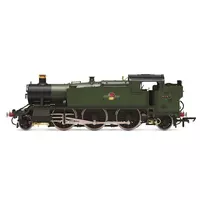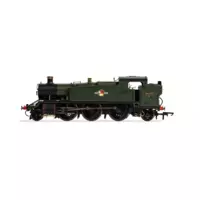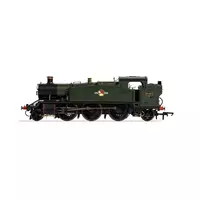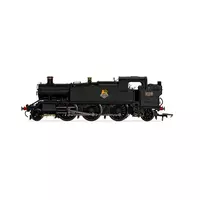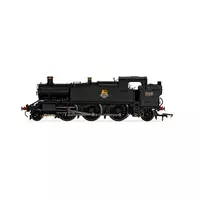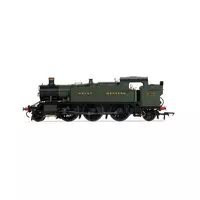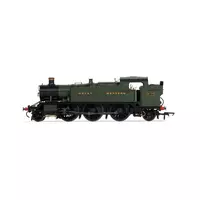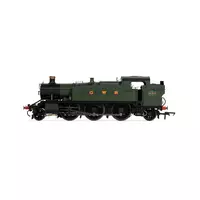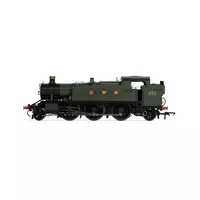Manufacturer catalogue image - please note that pre-release images may be CAD renders or CGI images rather than photographs
Prototype Era
Era 4 (1948 to 1956) British Railways Early Crest
Manufacturer description
In 1903, George Churchward, Chief Mechanical Engineer of the Great Western Railway, embarked upon his locomotive improvement scheme with three types of 'standard' class engines, of which his 2-6-2T design was destined to become probably the GWR's most useful locomotive, lasting in traffic until the last month of Western Region steam operations in December 1965.
The Class prototype, No. 99, spent two years working across the GWR system and the lessons learnt from its performance were incorporated into the thirty-nine production locomotives of the 3100 Class, introduced during 1905/1906. At eighteen tons, they were designated as red route engines, initially being able to cover 42% of the GWR network. In 1927 experiments were undertaken to reduce the weight distribution of the class leading to the locomotives gaining blue route clearance and being renumbered in the 5111-5149 range, changing the class designation to 5100 in the process. At the same time as the 3100 class locomotives were being converted to 5100 class, further locomotives to the same design and blue route designation were built, designated as the 5101 class. 140 locomotives were built between 1929 and 1949, incorporating all the modifications applied to the 3100 class.
The need for new locomotives to work accelerated London suburban services at the beginning of the 1930s led to further development of the 5101 class, an uprated Standard 2 boiler being fitted to seventy new locomotives built between 1931 and 1935. Numbered in the 6100- 6169 range, they were designated as the 6100 class, being stationed at every London depot and replacing all other passenger tank locomotives except the auto-train fitted engines. It was only the reorganisation of the London suburban timetables in 1955 that led to some locomotives being transferred away from London and it was these examples that survived to the end of steam on the Western Region.
Built at Swindon Works under Lot No. 259 during April 1931, Diagram A9 Class 5101 'Large Prairie' No. 5189 entered traffic with the Wolverhampton Division, with all bar fifteen of the 5101 fleet of 'Large Prairies' forming the mainstay of the suburban passenger services until the early 1940s. On entering service with British Railways in 1948, 5189 was allocated to Stourbridge Junction, from where it would have mainly worked local services towards Birmingham, but the locomotive was one of the earlier withdrawals from traffic due to increasing use of Diesel units, being withdrawn at the end of August 1959.
Catalogue listing
Model details
Prototype information
* Class names often change over the lifespan of a locomotive, so this is not necessarily the class name used by the operator in the period modelled.
Supplier links are provided for your convenience and do not guarantee that the product is currently available. RailwayModels.uk is not a representative of these suppliers, but may receive a commission when purchases are made through links on this page.



